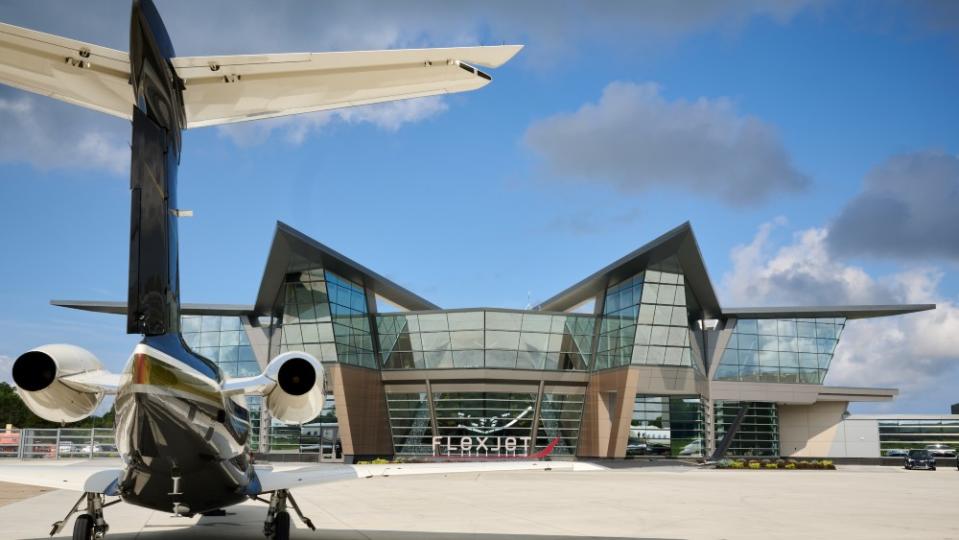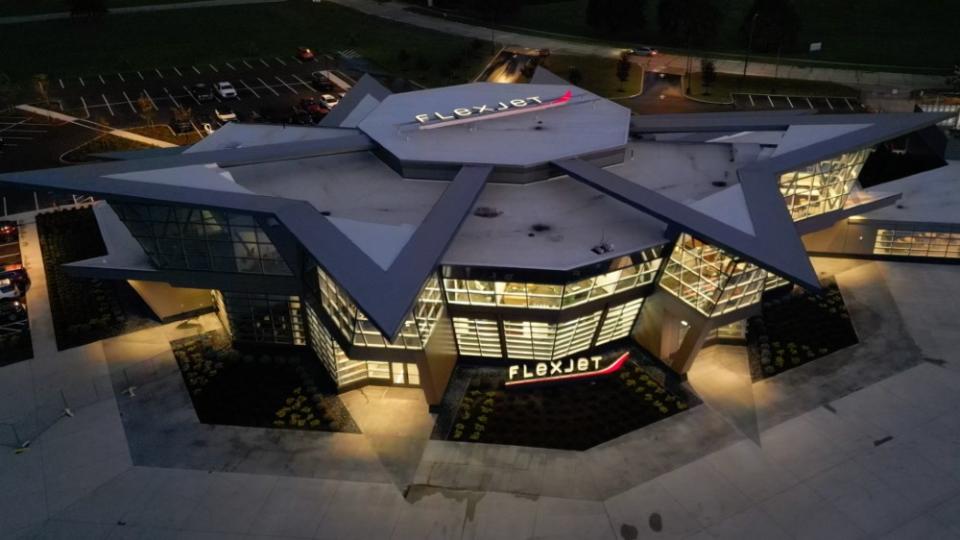Flexjet Just Opened a New $50 Million Headquarters in the U.S. Here’s a Look Inside.

If you thought that private jets were all about popping Champagne and living the good life, think again. The largest fractional providers invest tens of millions into technical infrastructures designed to monitor their fleets in real time, with the goal of keeping their owners’ flights on time and safe. Think NASA for private jets.
Flexjet’s new $50 million headquarters is dominated by the country’s largest seamless LED screen in its operations center. The massive monitor is comprised of 1,572 individual LED screens with a total measurement of 20 by 176 feet. The digital map, which pinpoints Flexjet’s flights at their respective locations across the U.S., is the centerpiece for this state-of-the-art operations room.
More from Robb Report
The size of the screen almost seems like an unnecessary bragging point, until it becomes clear that it’s part of a larger system responsible for coordinating flights for Flexjet and a half-dozen other brands owned by its parent, Directional Aviation. “It allows us to manage our flights all over the world,” Flexjet chairman Kenn Ricci told Robb Report during a visit to the new facility.

Flexjet is the second-largest fractional provider behind Columbus, Ohio-based NetJets. Flexjet’s home is north at Cleveland’s Cuyahoga County Airport. The company has all but taken over the once-quiet regional airport as it continues to expand. Now, Flexjet has a 243,000-square-foot campus that includes offices, the operations center, and maintenance facilities. It’s also a frequent stopover point for Flexjet’s fleet of 270 business jets, which range from the light-jet Phenom 300 to the super-midsize Gulfstream G650.
“We’ve seen big growth from before Covid, when we were balancing about 200 flights per day,” says Ricci. “Now that number is up to 350, mostly due to our acquisition of 100 new aircraft.”
The new headquarters was designed as a “futuristic center” for Flexjet and its other brands, Ricci says, complete with glass-encased offices and lounges—angular architectural features that not only give the building a star-shaped look but serve as overhangs to protect the business jets. It is quite the contrast to the old-school facilities, built in 1998, that the new headquarters replaced.

But the heart of headquarters is clearly its global command center, designed from the ground up to coordinate domestic flights and, as Flexjet and the sister brands grow in Europe, to handle its global flights and operations.
The tiered, stadium-style design, surrounded on different walls by video feeds, data about each aircraft, and satellite weather maps, was inspired by NASA control centers, with departments organized into teams who monitor each flight from the big boards. Having all that data on the walls, and on team members’ personal displays, allows Flexjet to better coordinate flights while also focusing on weather, delays, and maintenance issues. “We have 137 seats in the room, with 89 in the tiered levels and 48 on the main level,” says Jason Christensen, vice president of operations. “In our old center, there were only 50 seats.”
The new space will allow for expansion, says Ricci, as Flexjet continues to acquire larger aircraft like the G650 that can fly internationally. Last summer, the fractional provider made 550 transatlantic flights to Europe, a record for its international traffic. “This international growth is what prompted us to consolidate our operations here in Cleveland,” he says, though its operations centers in Boston and Farnborough, U.K., will remain intact.

The operations center is broken into four groups: flight communications, flight control, logistics, and scheduling, with subgroups like weather meteorologists, maintenance specialists, fleet-category leaders, and reps tasked with handling owner’s flights.
Christensen says the new center combines skilled personnel with new technologies, like optimization software, that coordinates flights—and often finds matches between Flexjet’s own fleet and third-party operators flying for sister brands Sentient and FX Air. “We are able to eliminate empty legs that way,” he says, referring to return flights with no passengers.

At the top of the room is an octagonal table, with monitors that lift up out of the surface, where senior managers work during peak travel periods like Thanksgiving or the December holidays. The idea, says Christensen, is to be able to troubleshoot issues that can cause big delays. “One weather delay or mechanical hiccup can impact five to 10 flights,” he says.
Ricci likes the organizational structure of the new center because it puts different departments on the same team. “Our competitors might put schedulers or meteorologists at their own tables,” he says. “We organize our teams around different aircraft types.”
The Flexjet chair has also been flying in new owners in to see the headquarters. “After all, they’re making a commitment worth a few million dollars,” he says. “We designed this facility to be practical but also as a sales and marketing tool for the brand.”
Best of Robb Report
Sign up for Robb Report's Newsletter. For the latest news, follow us on Facebook, Twitter, and Instagram.


